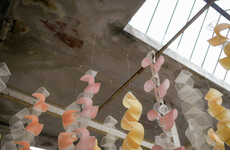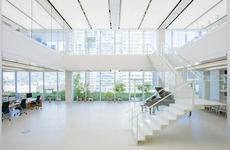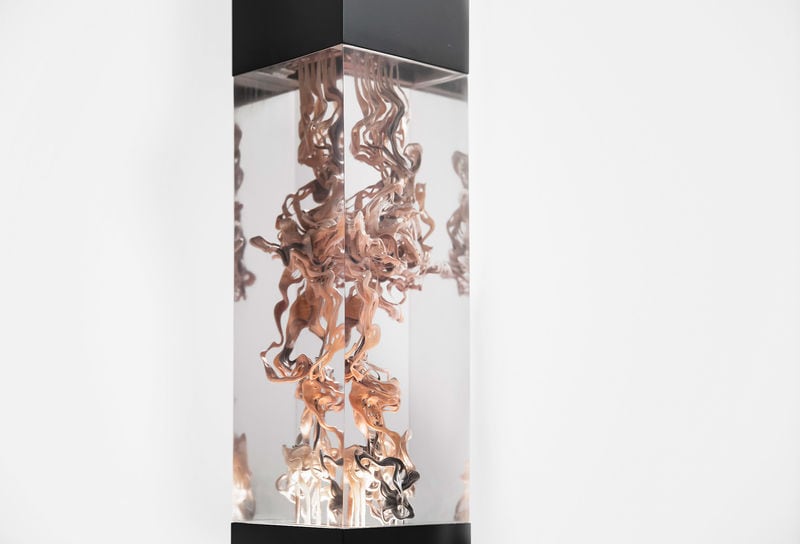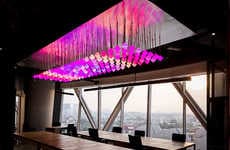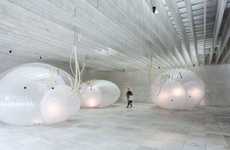
Neri Oxman Speculates Melanin Use in Architecture and Design
References: neri.media.mit.edu & dezeen
Neri Oxman and the Mediated Matter Group at MIT are exploring the possible implications of melanin use in architecture and design. The thesis is that skin pigments will be of value within industries with an ecological focus.
Commissioned by the XXII Triennale di Milano, the skin-pigment based structure presents a 3D-printed transparent brick injected with flesh-colored plumes that take on a smoke-like form. Dubbed 'Totems' — a nod to indigenous cultures, the installation is an extension of the search for "enhancing biodiversity across living systems."
Neri Oxman and her Mediated Matter Group hope to transfer the properties of skin pigments to design projects. Melanin use can be beneficial to eco-conscious product development and research as the substance is found to function as a shield for "high temperatures, chemical stresses, and biochemical threats."
Commissioned by the XXII Triennale di Milano, the skin-pigment based structure presents a 3D-printed transparent brick injected with flesh-colored plumes that take on a smoke-like form. Dubbed 'Totems' — a nod to indigenous cultures, the installation is an extension of the search for "enhancing biodiversity across living systems."
Neri Oxman and her Mediated Matter Group hope to transfer the properties of skin pigments to design projects. Melanin use can be beneficial to eco-conscious product development and research as the substance is found to function as a shield for "high temperatures, chemical stresses, and biochemical threats."
Trend Themes
1. Melanin-based Design - Exploring the use of melanin in architecture and design presents opportunities for innovative and sustainable products.
2. Ecological Industries - Industries with an ecological focus can leverage skin pigments for eco-conscious product development and enhancement of biodiversity.
3. Bio-inspired Materials - Transferring the properties of skin pigments to design projects can lead to the development of bio-inspired materials for various industries.
Industry Implications
1. Architecture - Melanin-based design can disrupt the field of architecture by introducing new sustainable and visually appealing construction materials.
2. Design - The use of melanin in design opens up opportunities for creating innovative and eco-friendly products with enhanced functionality.
3. Biotechnology - Exploring melanin's properties for product development can revolutionize the biotech industry by creating bio-inspired materials with exceptional capabilities.
3.8
Score
Popularity
Activity
Freshness


